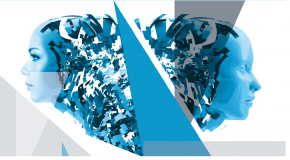August 1st 2012 began as a relatively peaceful day on the New York Stock Exchange (NYSE) trading floor. The latest monetary policy statement from the Federal Reserve was due later that morning, and much of the market was quiet ahead of the news. Then, in a matter of seconds, a surge in trading volume started affecting stock prices. Violent swings of more than 10% within a five-minute period saw many stocks halted by the exchange’s circuit breakers. "Stocks are moving all over the place," noted one investor at the time, "it is weird, they are trading millions of shares, 100 shares at a time; something went haywire somewhere."[1]
The source of the chaos was Knight Capital Group, a large trading firm that uses automated high-speed trading to buy and sell shares. The firm told clients it was dealing with a "technical issue" and was forced to turn away customers. It took just 45 minutes for the glitch to wipe out much of the company's capital base, causing a pre-tax loss of US$440m and forcing it to seek new funding to avoid bankruptcy.[2]
For many, the event was yet more evidence of an over-reliance on technology in the financial markets. It is also a dramatic manifestation of what occurs in many parts of the financial sector, including banks and insurers, when something goes wrong in the interaction between information technology and the humans who operate it. Within banks, for example, missed payments, incorrect statements or inefficient responsiveness to customer requests are some of the more everyday problems caused by human-technology mishaps. Others are more consequential: a programming error in June 2012 caused a lengthy outage of Royal Bank of Scotland (RBS) customers' online access to their accounts, costing the bank an estimated £175m in compensation payments.[3]
When it comes to suffering material losses, they are not alone. Over one-third (37%) of the financial industry executives surveyed for this report—who include retail bankers, commercial bankers, insurers and others[4]—say that an automated decision made by a computer programme cost their organisation money at least once in the past six months. Nearly one in three (30%) report that such issues have resulted in a loss of customers.
Industry executives are largely positive when asked about the present and future nature of human and technology interaction in their firms, but many nevertheless voice concerns. For example, 43% – more than other sectors in our survey – feel that technology is complicating person-to-person communication more than it is facilitating it. (The substantial increase in time spent using e-mail in the last three years, reported by 45% of respondents, may be partly to blame for this.) And little more than one-quarter believe that technology has freed up people's time to be more innovative. Disconnected systems (for example, between front and back-office functions), and technologies evolving faster than the processes developed to use them, are seen as especially significant challenges finance industry firms face in dealing with technology.
Trading, for example, was a very social, people-driven activity. "Whether it happens upstairs on trading desks or on the floors of exchanges, there has always been human-to-human interaction," explains Jose Marques, Deutsche Bank's global head of equity electronic trading. But over the past ten years this has changed dramatically. Today, 73% of all equity orders (by volume) in the US and 40% in Europe are handled by high-frequency trading firms.[5]
Such speed and efficiency have opened up myriad new strategies for traders to exploit, leading to an explosion in market activity. But they have also given rise to the types of risks highlighted at the start of this article. In other parts of the sector, the challenges that arise as technology advances at a rapid pace manifest themselves in different ways.
A matter of trust
Retail banking was once a people-centric business but has become increasingly automated. Systems now make rapid decisions on numerous aspects of personal finance, such as whether customers qualify for a loan or a new credit card. Some start-ups within the sector use this speed as a means of competing against slower, more traditional banks. For example, Wonga.com, a UK firm which provides short-term loans online, not only promises loan decisions in less than half an hour but will also deposit the funds within the customer's account in that time.
One reason why online firms can automate the process of credit checking is that the nature of how applicants' reputations are established and enhanced is fundamentally changing. Where credit managers have traditionally determined whether an individual is creditworthy or not, a host of new variables are now coming into play. These include information aggregated and sold by online data brokers relating to customers' purchasing activities on the web. eBureau, for example, a predictive analytics firm, gathers masses of data about consumers which it uses to calculate "e-scores" of some 20m people each month for banks, insurers and other financial services firms.[6] Another online firm, Movenbank, now even tracks consumers’ activity on various social media platforms as an element in determining their financial credibility.[7]
According to Rick Robinson, an executive architect at IBM, the importance of online trust and reputation has risen rapidly in parallel with the growth of peer-to-peer activities, such as choosing to buy from a stranger online. “There has been an evolution in both business models and technologies that aim to provide trust within that online context,” says Mr Robinson. “Take the peer-to-peer personal loans market. There are traditional banking processes to give loan providers a reason to trust that their money is reasonably safe. But there are also things like reputation systems, which use online networks to see who applicants are friends with and how they're connected, all of which provide additional reasons to trust [or not to trust] the applicant.”
As is often the case in the financial industry, such technology-based services are developing much faster than the rules governing them, resulting in new risks. When an online credit scoring agency gets it wrong, the lender may not have much recourse when a loan goes bad. (By the same token, borrowers can find it difficult to repair one’s reputation.) Fortunately, technology is also allowing third parties to step in and help borrowers and lenders retain some control over these processes. Services such as Reputation.com can help borrowers, for example. to take better control of their online profiles.
Back in the trading sector, banks themselves are developing process improvements and risk controls to help redress imbalances caused by rapid technology advances. Deutsche Bank, for instance, is developing a system to help visualise the logic being deployed within its automated trading systems. "Very few people feel comfortable handing off a very large, important trade to a machine when it’s not doing something entirely transparent to the human,” explains Mr Marques.
Machine processors and human processes
In general, the positive impact of smart technology on financial services is clearly evident in our study. Nine in ten executives surveyed for this report emphatically deny that technology is usually the single point of failure when things go wrong in their organisations. Indeed, technology is typically at the heart of many of the innovations being made: 41% of financial sector respondents say their team's best innovations of the past three years could not have been delivered without it, and three in ten say they could not even have been conceived without technology. About eight in ten (78%) say it makes them more productive, while three-quarters deny that technology is making it more difficult to be imaginative and creative in their work.
The caveat to this optimism is that the vast majority of those we spoke to believe that human-technology interaction will only add value if humans are more creative with the processes developed to connect the two. Ultimately such innovation should lead to machines and humans working in symphony, but at the moment a large minority (40%) are not confident that the difficulties involved in human-technology interaction will all be ironed out. It is yet another reminder that, in as transaction-intensive an industry as financial services, technology will only be as good as the processes that people develop to guide it.
A case in point is how banks are beginning to use artificial intelligence to gain a better understanding of customers. BBVA Compass, a retail bank, uses web 'robots' to scour the Internet for paragraphs and sentences relating to the bank and its major competitors. The process, known as sentiment analysis, interprets what it finds to give decision-makers insights that would take traditional focus groups and surveys months to uncover.
To properly benefit from this technology banks have to change the way they work, in particular re-thinking their traditional sales, marketing and product development processes. The norm has been a gradual and linear process of research, followed by product development, then annual sales and marketing planning. Today banks like BBVA Compass operate in a more dynamic, fluid and adaptive environment. They can respond in days to new trends, customer concerns and the competition; bad decisions can be immediately identified and reversed, and opportunities can be taken faster than ever before. Without this shift in approach and processes, daily web sentiment analysis has limited value.
Still a place for the human touch
Beyond making changes to business processes, there is still a vital role to be played by humans in this sphere. Gauging the feelings and emotions of customers from what they write on the Internet is a massive challenge for machines. Here as in loan approvals and credit checking, while the technologies continue to develop from infancy, the information gathered and interpreted by people—such as branch staff talking face-to-face with customers—will remain vital in banking for the foreseeable future.
This is also the case in the investment sector. Says Deutsche Bank’s Mr Marques: "One of the things we miss when we are automating social human processes is subtlety. In constructing an asset portfolio, an analyst might meet with the senior management of a portfolio company. They have a conversation, and the firm's management disclose the information that they are legally allowed to disclose. But there are additional data in that conversation, in the body language or the inflection of the voice, which cannot be captured within a quarterly filing or the annual accounts.”
Free to think creatively and brainstorm, humans add value by shaping and optimising whatever technology is helping to enable. "At the end of the day," believes Mr Marques, "we’ll end up in a place where man and machine are working together as an integrated system to achieve far better outcomes than we can today."
Technology has revolutionised many aspects of how banks and other financial institutions deal with their customers, and has likewise enabled enormous leaps in their operating efficiency. But as the examples in this article suggest, technology change in this industry is likely to continue at a relentless pace. The risk of sacrificing a degree of human imagination and intuition at the altar of technological progress will thus remain ever present. In finance as everywhere else, that would be an irretrievable loss.
* This article is excerpted from a forthcoming Economist Intelligence Unit report, Humans and machines: The role of people in technology-driven organisations.
The report will be published on 5th March 2013 to coincide with the "Technology Frontiers 2013" summit, hosted by The Economist Events. Both the report and the summit are sponsored by Ricoh.
[1] “New York Stock Exchange’s ‘weird’ glitch causes volatility; some trading halted”,Huffington Post Business, August 1st 2012.
[2] Knight Capital Group Press Release, August 2nd 2012.
[3] "Cost of RBS IT glitch grows to £175 million", Information Age, November 2nd 2012.
[4] The survey of 432 senior executives was conducted online in November and December 2012. Of the 63 financial industry executives who took part, roughly equal numbers hail from Europe, Asia-Pacific and the Americas. A majority of 55% hold C-suite or board positions, with the rest being other senior managers. Just under half of the financial industry firms in the survey (48%) have annual revenue in excess of US$500m, with 11%having US$10bn or more.
[5] “Regulators globally seek to curb supercomputer trading glitches”, Reuters, August 31st 2012.
[6] “Secret e-scores chart consumers’ buying power”, New York Times, 18 August 2012
[7] “Is the world ready for social media credit scores”, The Financial Brand, 14 August 2012







